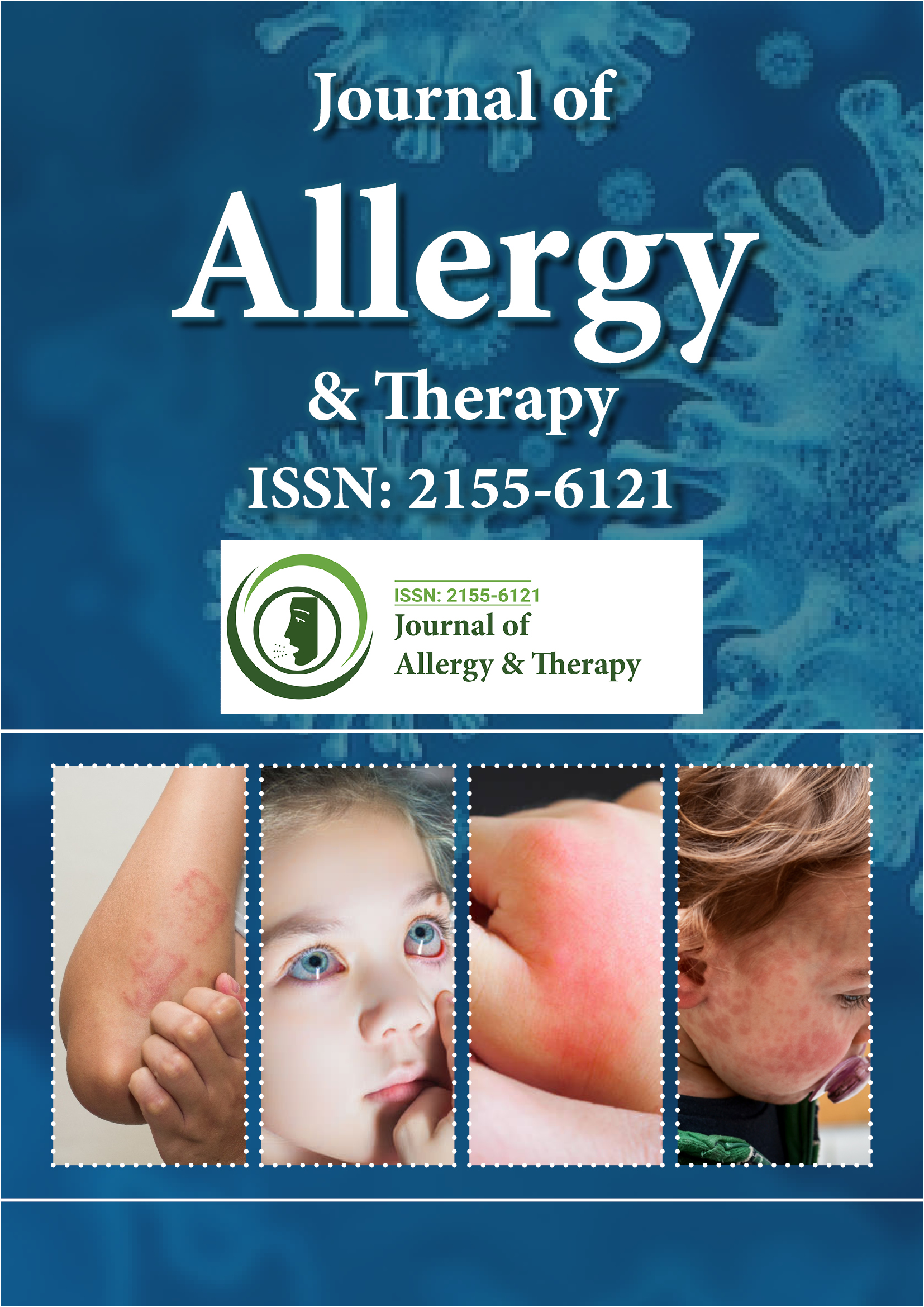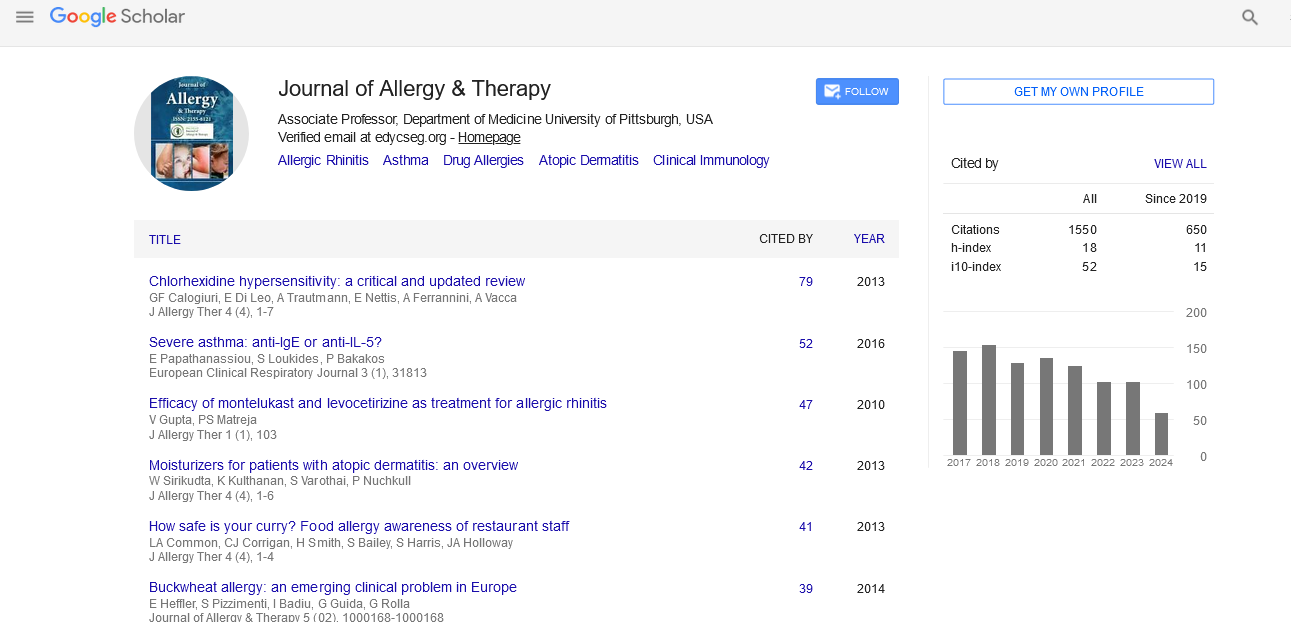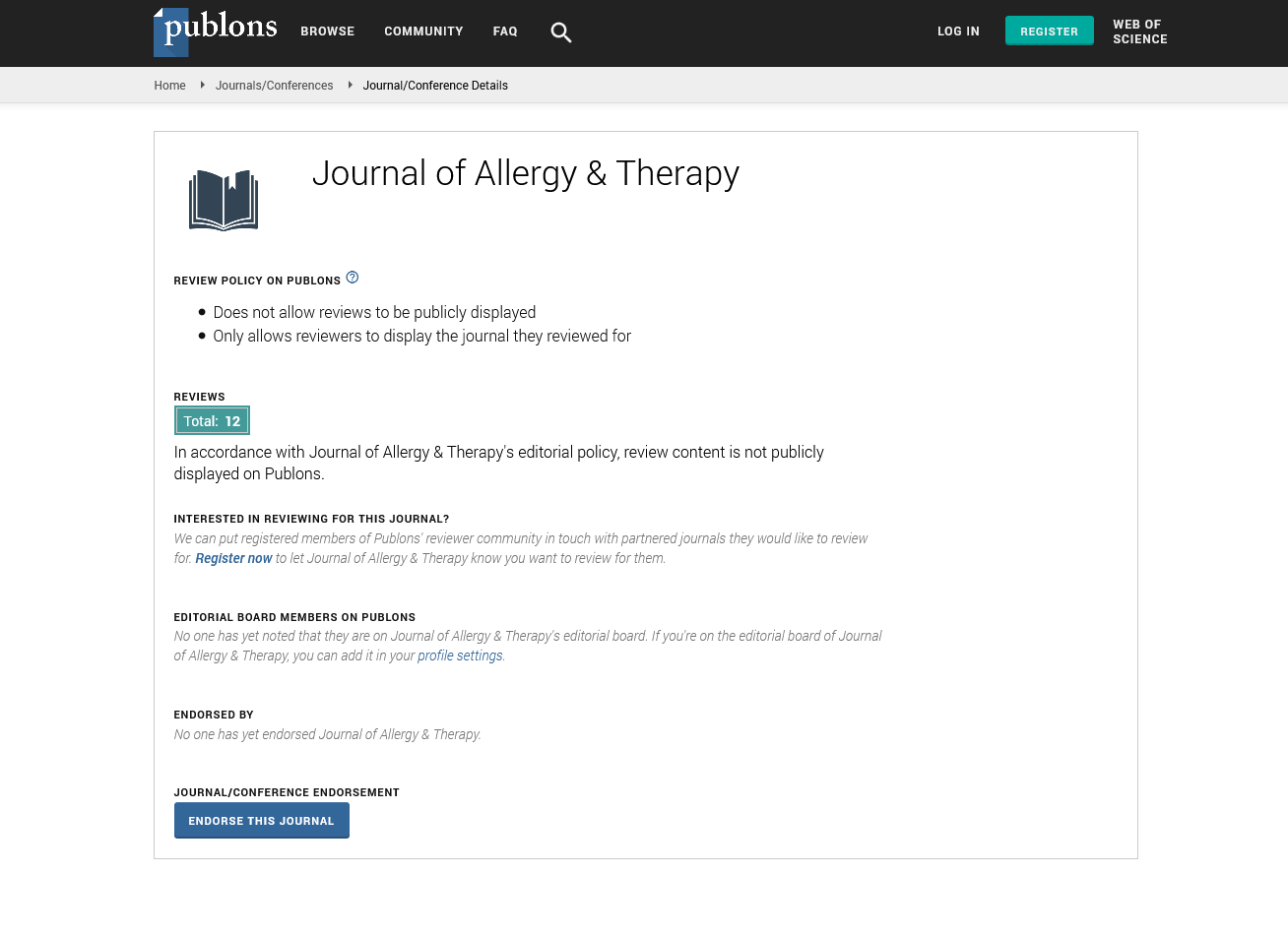Indexed In
- Academic Journals Database
- Open J Gate
- Genamics JournalSeek
- Academic Keys
- JournalTOCs
- China National Knowledge Infrastructure (CNKI)
- Ulrich's Periodicals Directory
- Electronic Journals Library
- RefSeek
- Hamdard University
- EBSCO A-Z
- OCLC- WorldCat
- SWB online catalog
- Virtual Library of Biology (vifabio)
- Publons
- Geneva Foundation for Medical Education and Research
- Euro Pub
- Google Scholar
Useful Links
Share This Page
Journal Flyer

Open Access Journals
- Agri and Aquaculture
- Biochemistry
- Bioinformatics & Systems Biology
- Business & Management
- Chemistry
- Clinical Sciences
- Engineering
- Food & Nutrition
- General Science
- Genetics & Molecular Biology
- Immunology & Microbiology
- Medical Sciences
- Neuroscience & Psychology
- Nursing & Health Care
- Pharmaceutical Sciences
Diagnosis of food allergy
7th International Conference on Allergy, Asthma and Clinical Immunology
September 14-15, 2016 Amsterdam, Netherlands
Alejandra Medina-Hernandez
Universidad Autonoma de Queretaro, Mexico
Posters & Accepted Abstracts: J Allergy Ther
Abstract:
The prevalence of allergic diseases worldwide is rising dramatically in both developed and developing countries. These diseases include asthma, rhinitis, anaphylaxis, drugs, food and insect allergy, eccema and urticaria and angioedema. In spite of this increase, services for patients with allergic diseases are fragmented and far from ideal. Despite the obvious importance of allergic diseases, allergy is poorly taught in medical schools and during post-graduate medical education. Allergic disorders are heterogeneous and involve important gene-environmental interactions. Genetic factors that influence the expression of atopy are different from those that influence disease manifestations or its severity in specific organs. Epigenetic influences involving multiple mechanisms that explains a proportion of the gene-environmental interactions and trans-generational effects. Sensitization (IgE antibodies) to foreign proteins in environment is present in up to 40% of the populations. Such sensitization is strongly associated with exposure for proteins derived from pollens, moulds, dust mites and cockroaches. For asthma, rhititis and atopic eczema the association between disease and sensitization is strong, but in food, drug allergy and urticaria the implication of non-IgE mechanisms is present. The appropriate diagnosis strategies starts with a detailed study of patient�??s history, with a thorough examination of patient�??s symptoms and medical history and the proper studies have to confirm the diagnosis, determinate its immunological mechanisms and identify the causative allergen. Once the diagnosis has been established and relevant allergens have been identified, it is possible to prescribe targeted therapies such as allergen avoidance, allergen-specific immunotherapy and anti-IgE therapy.
Biography :
Email: medinaha@hotmail.com


